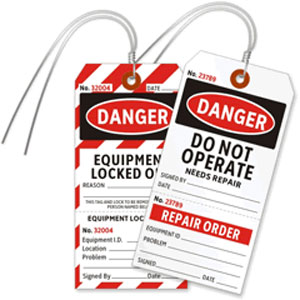Foundry Fined for Confined Space Amputation Accident
 Los Angeles - Cal/OSHA has cited a local foundry $283,390 for workplace safety and health violations following a confined space accident that resulted in the amputation of an employee’s legs. Cal/OSHA had cited the foundry for similar violations eight years ago.
Los Angeles - Cal/OSHA has cited a local foundry $283,390 for workplace safety and health violations following a confined space accident that resulted in the amputation of an employee’s legs. Cal/OSHA had cited the foundry for similar violations eight years ago.Two workers were cleaning and unjamming a 38-foot long auger screw conveyor at the bottom hopper of an industrial air filtration device without effectively de-energizing or locking out the equipment.
One of the workers re-entered the 20-inch square opening after the cleaning was done to retrieve a work light from inside the confined space, when a maintenance worker 45 feet away energized the equipment to perform a test.
The moving auger screw pulled the worker into the screw conveyor. Both his legs had to be amputated in order to free him.
“Sending a worker into a confined space is dangerous, especially inside machinery that can be powered on at any time,” said Cal/OSHA Chief Juliann Sum.Employers must ensure that machinery and equipment are de-energized and locked out before workers enter the space to perform operations involving cleaning and servicing.
Cal/OSHA’s investigation found that:
• The foundry did not have a permit-required confined space program.
• The screw conveyor was not de-energized and locked out before workers entered the hopper, and accident prevention signs were not placed on the controls.
• The worker re-entering the hopper was not monitored by a confined space attendant.
• The foundry lacked specific procedures for de-energizing and locking out the equipment.
Cal/OSHA issued eight citations with proposed penalties totaling $283,390. The eight violations cited included one willful serious accident-related, one willful serious, four serious, one willful general and one general in nature.
Source: www.dir.ca.gov News Release No.: 2018-15 Date: March 7, 2018


 Newly revised and updated with 82-pages of color drawings and detailed illustrations, Roco's new
Newly revised and updated with 82-pages of color drawings and detailed illustrations, Roco's new  Comments by Dennis O'Connell, Roco Director of Training & Chief Instructor
Comments by Dennis O'Connell, Roco Director of Training & Chief Instructor
 Roco Rescue Challenge 2017 was held at our Confined Space and High Angle Training Facility (RTC) in Baton Rouge, Louisiana on October 11 & 12. This year we had teams representing Petro-Chemical, Paper Mills, Fertilizer Manufacturing and Municipal Rescuers.
Roco Rescue Challenge 2017 was held at our Confined Space and High Angle Training Facility (RTC) in Baton Rouge, Louisiana on October 11 & 12. This year we had teams representing Petro-Chemical, Paper Mills, Fertilizer Manufacturing and Municipal Rescuers.









